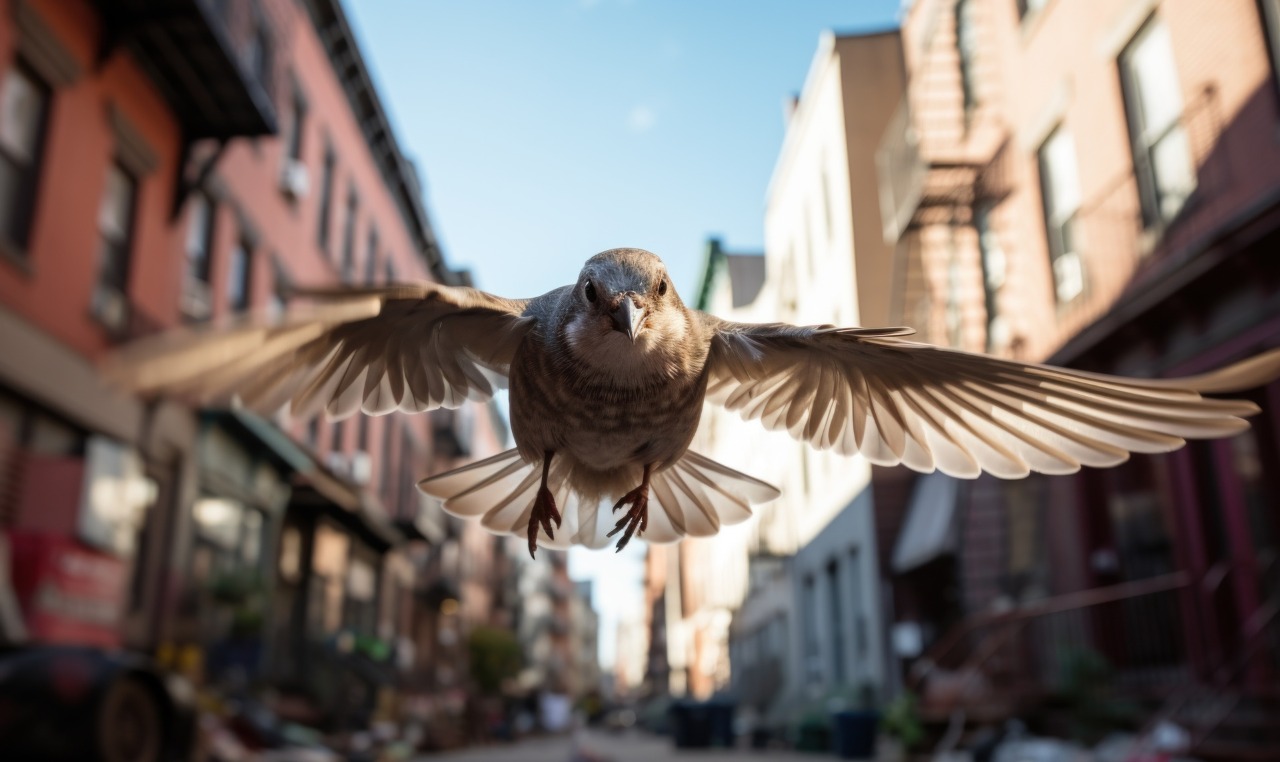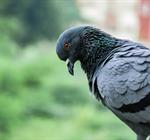
28 Apr 2025 | Apex Environmental Services (UK) Ltd
How to Stop Birds from Flying into Windows
That sickening thud against your window. We've all heard it. Window strikes kill millions of birds each year in the UK alone, but it doesn't have to be this way. With a few simple changes, you can prevent these heartbreaking collisions without sacrificing your view or home's appearance.
Why Do Birds Fly Into Windows?
It's not that birds are dim – they simply can't process the concept of glass. What they see is sky and trees reflected in your windows, not a solid barrier. This confusion peaks during migration when birds are navigating unfamiliar territory.
Windows become death traps in two main ways: daytime reflections of habitat, and night-time light that attracts migrating birds. Your innocent home might be an optical illusion that's deadly for our feathered visitors.
How to Stop Birds Flying into Windows (Proven Methods)
Ready to make your windows safer? Here's what actually works, from quick fixes to more permanent solutions that won't turn your home into an eyesore.
1. Apply Window Decals or Stickers
Forget those old-school hawk silhouettes – they don't work. What does work is breaking up reflective surfaces with multiple decals. The trick? Birds will try to fly through any gap larger than 10cm, so space your stickers accordingly.
Position decals on the outside surface where reflections occur. You'll find decorative options these days that look more like intentional design elements than bird deterrents.
2. Install External Screens or Netting
Screens and nets create a physical buffer that prevents direct glass strikes. Effective anti-bird solutions like these can be installed several inches from your windows, softening any impact if birds still fly towards them.
Most people hardly notice screens from inside, and they're brilliant for windows that seem to attract frequent strikes. Plus, they still allow for fresh air when your windows are open.
3. Use Bird-Safe Film or UV Patterns
Birds see light differently than we do – they can detect UV wavelengths invisible to human eyes. Specialised films take advantage of this by displaying patterns birds can see while remaining nearly invisible to us.
These clever films apply directly to existing windows, preserving your views while creating a visible barrier for birds. They're particularly good for picture windows or areas where aesthetics matter most.
4. Try Temporary DIY Fixes
Spotted a bird that keeps targeting a particular window? Grab whatever you have on hand – washable window paint, soap, whiteboard markers – and draw vertical lines about 10cm apart. Not pretty, perhaps, but effective in a pinch.
Hanging strips of ribbon or string from the top of problematic windows works too. These flutter in the breeze, creating movement that warns birds away before collision.
5. Close Blinds or Curtains During Peak Hours
Dawn and dusk see the most strikes. If you're not using certain rooms during these times anyway, simply drawing the curtains can save lives. This works especially well during spring and autumn migrations when bird traffic increases.
No need for fancy equipment – just a small adjustment to your daily routine that can make an enormous difference.
6. Move Houseplants Away From Windows
That gorgeous fiddle leaf fig by your window? Birds might mistake it for habitat they can fly into. Moving indoor plants away from windows removes the false promise of shelter that lures birds towards glass.
It's worth rearranging a bit, especially for windows facing garden areas where birds already congregate.
7. Use Feather-Friendly Window Films
Unlike general window films, products specifically designed for bird safety have been thoroughly tested. These typically feature patterns of small dots spaced at distances proven to alert birds without blocking your view.
They apply to the outside of the glass and can withstand weather for years. Not the cheapest option, but possibly the most elegant long-term solution.
Extra Tips for Making Your Windows Bird-Safe

Want to go beyond the basics? These additional measures can further reduce collision risks around your property.
Reduce Exterior Lighting at Night
Night-migrating birds navigate by starlight and can become fatally disoriented by artificial lighting. Switching off unnecessary outdoor lights during migration seasons (typically March-May and August-October) helps birds stay on course.
Motion sensors are a brilliant compromise if you're concerned about security but still want to help night flyers.
Add Window Awnings or External Shades
Outside window coverings reduce reflections dramatically while adding architectural interest to your home. They're particularly useful for south-facing windows that create mirror-like surfaces on sunny days.
The shade they provide cuts energy bills too – a rare win-win-win for birds, aesthetics, and your wallet.
Keep Feeders Either Close (within 3ft) or Far (over 30ft)
Bird feeders need strategic placement. Too far from windows and birds build up enough speed to hurt themselves seriously if they crash. Position feeders either very close (birds can't gain much momentum) or quite far away (they're less likely to head towards the house).
This placement helps birds learn safe flight paths around your home while still enjoying the food you provide.
Monitor High-Risk Seasons (Spring & Fall)
Migration periods mean more birds passing through unfamiliar territory. If you're keen on humane methods for deterring birds during these periods, pay special attention to your prevention methods in spring and autumn.
Even temporarily increasing your bird-safe measures during these weeks can save dozens of lives.
Final Thoughts
You don't need to be a bird expert or spend a fortune to make your windows safer. Start with the highest-risk spots – usually large picture windows or those reflecting greenery – and try the simplest solutions first.
Every thud you prevent is a life saved. And with bird populations facing so many threats, from habitat loss to climate change, making your home safer is a small gesture with real impact.
Remember: perfect solutions don't exist, but any improvement matters. By taking even one idea from this guide, you're already making a difference to the birds visiting your garden and passing through your neighbourhood.


